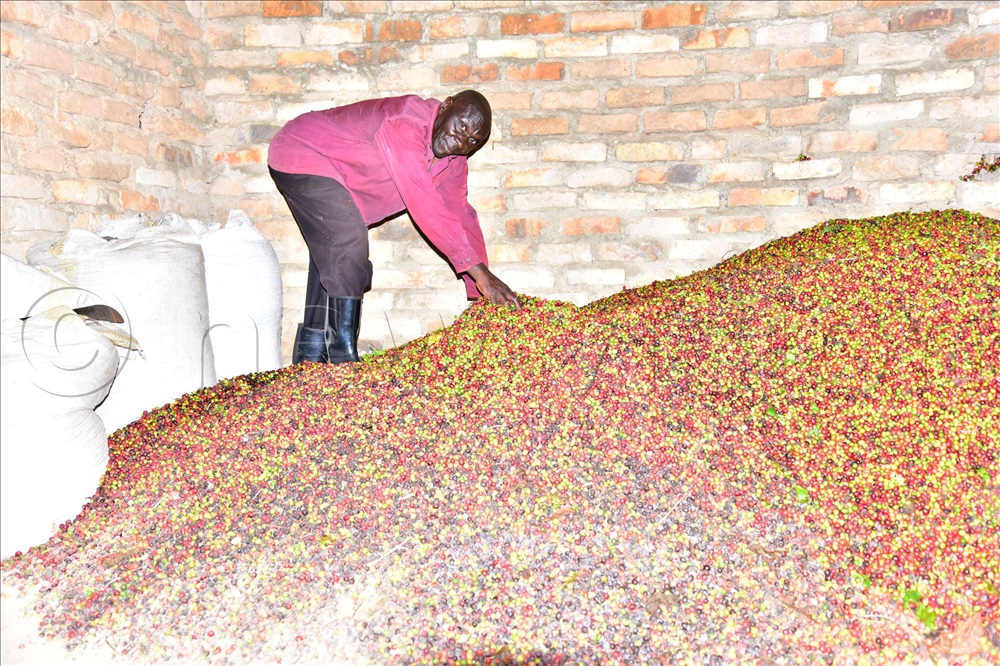Julius Kalanzi, a coffee farmer with four acres of land, has struggled with poor yields due to improper harvesting and drying methods.
Like many farmers, he faces challenges in maintaining the quality needed for better market prices.
Proper harvesting and drying techniques are essential for producing high-quality coffee that meets both local and international standards.
According to Swizen Wamala, a coffee farmer and resident of Kyarutale Village, Kagadi district, coffee quality begins right from the harvesting stage.
He says coffee should only be picked when fully ripe.
“Many farmers make the mistake of picking unripe or overripe cherries, which compromises the taste and overall quality of the final product,” he says.
Wamala advises farmers to use the selective picking method, where only the red, ripe cherries are harvested. This process may take more time and labour, but it ensures that only the best cherries make it to the drying process.
“If you mix unripe and overripe cherries with good ones, the quality of the final coffee will be low, affecting market prices,” he adds.
Christopher Mugabi another coffee farmer adds that farmers should avoid stripping the entire branch, as this damages the coffee plant and results in uneven ripening in subsequent harvests.
“You should use your fingers to gently pluck each ripe cherry, ensuring that the plant remains healthy for the next season,” he advises.
Sorting and preparing for drying
After harvesting, the coffee must be sorted to remove unripe, diseased, or defective cherries.
Yekosefati Sekabembe, a highly respected coffee farmer and trainer, explains that sorting helps in maintaining uniformity in drying.
“I always tell farmers that sorting is a critical step that determines the quality of coffee. If you mix poor-quality cherries with good ones, buyers will downgrade your coffee,” he says.
Sorting can be done manually by spreading the coffee on a raised surface and picking out defective cherries.
Some farmers use water to separate bad cherries from good ones. Ripe cherries sink, while poor-quality ones float and should be discarded.
Drying coffee to the right moisture content
The drying process is crucial in maintaining the flavour and quality of coffee.

According to Wamala, coffee should be dried on raised beds or tarpaulins, never directly on the ground.
“When coffee comes into contact with soil, it absorbs unwanted moisture and flavours, leading to mold growth and contamination,” he warns.
Sekabembe explains that coffee should be spread in thin layers to allow even drying.
“If you pile coffee in thick layers, it will dry unevenly, leading to fermentation and spoilage,” he says.
To ensure even drying, the coffee should be turned regularly, at least four to five times a day.
Mugabi adds that the drying process should take 2-3 weeks, depending on the weather conditions.
“The ideal moisture content for dried coffee is between 10-12%. If it is dried too much, it becomes brittle and loses quality, if it retains too much moisture, it risks developing mold and being rejected in the market,” he advises.
Storage and maintaining standards
Once coffee is properly dried, it should be stored in well-ventilated, dry conditions.
Sekabembe advises farmers to use jute bags instead of plastic bags, as plastic retains moisture and can cause mold growth.
“Jute bags allow air circulation, keeping the coffee in good condition,” he says.
Mugabi recommends storing coffee off the ground on wooden pallets and ensuring that the storage area is free from strong odours, pests, and excessive humidity.
“Good storage practices preserve the quality of coffee until it is ready for sale,” he emphasises.





